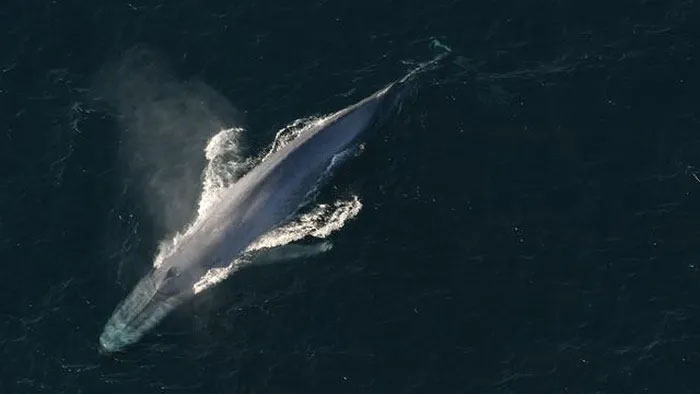In recent years, researchers have employed a variety of techniques to study whale habitats in the ocean, including aerial surveys, direct observations, and hydroacoustic monitoring. Now, for the first time, they can passively listen to the “voices” of whales (essentially eavesdropping) using existing underwater fiber optic cables.

With this system, known as a hydrophone array, there is an opportunity to cover a much larger area for monitoring. The sound is received from multiple angles, allowing researchers to determine where the animal has been and its location, which is a significant advantage.
Essentially, a fiber optic cable transmits light. Fiber optics is what provides you with high-speed internet (if you are fortunate enough to have it), and researchers have recently discovered that these cables can also be transformed into seismic sensors.
When the cables are subjected to acoustic waves (such as during earthquakes), the transmission of light is affected, and this can be detected with specialized equipment. Thus, a group of researchers thought, why not try using this method to detect underwater sounds – such as those made by whales.
This technique is called Distributed Acoustic Sensing (DAS), which employs a tool known as a signal interrogator to tap into the fiber optic system, turning unused fibers in the cable into hydrophones. The research was conducted in the Svalbard archipelago in the Arctic, where baleen whales, blue whales, and other species feed during the summer.
Leá Bouffaut, a researcher at the Bioacoustics Research Center at Cornell University and the lead author of the study, stated: “Sound travels in the ocean five times faster than in air.”

DAS allows scientists to detect the voices of whales and utilize their fiber optic network to locate whales in both time and space, with exceptional spatial resolution.
While most whale species have recovered from the banned hunting activities, many species are still threatened or at serious risk of extinction. They are subject to increasing stressors from human activities, ranging from ship strikes to noise pollution. Additionally, changes in water cycles and nutrition due to chemical and plastic pollution are becoming an escalating issue.
Researchers primarily rely on passive acoustic monitoring as a reliable method to study whales, from multi-sensory platforms to fixed automatic recording devices.
However, this work is very costly, and most recording devices are sparsely and unevenly distributed. Therefore, this research could provide a more efficient and cost-effective method.
DAS technology essentially functions like a hydrophone but can cover a much larger monitoring area compared to other methods. Researchers can use it not only to detect whale voices but also to determine their locations in both space and time, Bouffaut argues.
“Deploying hydrophones in practice would be very expensive, but currently, the underwater fiber optic network is extremely dense, and using fiber optic cables as hydrophones will save us a lot of costs,” she said. “This could be like how satellites cover the Earth, allowing scientists from various fields to conduct different types of research about the planet. To me, this system could become the satellites of the ocean.”

The researchers are currently working with the Norwegian Research Agency (Sikt), which has granted access to over 250 km of fiber optic cable in Svalbard, between the main town of the archipelago and a research settlement. The entire cable runs from Isfjorden and out to sea, where 120 km is utilized as a hydraulic array.
To conduct the research, two team members traveled to the archipelago in June 2020 at the onset of the Covid-19 pandemic. They collaborated with Alcatel Submarine Networks Norway, which provided the interrogator – a tool that allows researchers to extract data from Sikt’s fiber optic cables.
After reviewing over 250 terabytes of data, the researchers identified “calls” characteristic of North Atlantic blue whales outside of Isfjorden. Often, these are the sounds that males and females use to call each other.
The researchers concluded that further studies are needed to explore how this technology can be used for whale research and conservation, as it is an innovative method with great potential.
“My hope is to further develop this technology and provide it to all those involved in marine conservation,” Bouffaut said. “This technology could make the future of many whale species brighter.”


















































